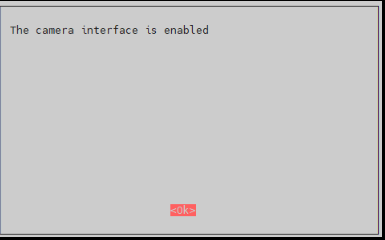Template: CM4 Duino Guide
Note
Do not plug or unplug any device while it is powered on!
Writing Image
- Write Image for Compute Module Boards eMMC version
- Wrote Image for Compute Module Boards Lite version
USB2.0
The USB port is disabled by default on the CM4 to save power. If you need to start, you need to add the following to the config.txt file:
dtoverlay=dwc2,dr_mode=host
After restarting:
If you use the latest Raspberry Pi OS (image after October 30, 2021) USB2.0 is OTG mode by default, CM4 will report an error:
config failed, hub doesn't have any ports! (err -19)
However, USB can still be used. If you want to remove this error, remove otg_mode=1 in [cm4] of config.txt, and add dtoverlay=dwc2, dr_mode=host (USB cannot be recognized without adding it).

ADC
Basic introduction
The ADS7830 is a single-supply, low-power, 8-bit data acquisition device with a serial I2C interface and an 8-channel multiplexer. The analog-to-digital (A/D) converter has a track-and-hold amplifier and an internal asynchronous clock.
The ADS7830 has a resolution of 8 bits, a total of 8 inputs, and a maximum sampling rate of 70KSPS.
It can be set to differential mode and single-ended input, and the program defaults to single-ended input.
The I2C address is: 0x48
Download Program
Open the Raspberry Pi terminal and execute the following command:
sudo apt-get install p7zip-full https://files.waveshare.com/upload/5/5d/CM4-duino-code.zip 7z x CM4-duino-code.zip -O./ cd CM4-duino-code
Python
Run the demo, the program supports python2/3.
# python2 sudo python ADS7830.py # python3 sudo python3 ADS7830.py
As shown in the figure below, A0-A7 are 7 analog input channels:

Note: A total of 8 ADCs are collected from 0-7. If the channel is suspended, the value of the channel will float up and down, and the data will be invalid.
LED usage
A programmable LED is onboard:

Using GPIO6:

Button usage
Onboard 2 buttons USER1 USER2:

USER1 uses GPIO4, USER uses GPIO5, and USER2 can choose whether it is the reset of CM4 through the resistor, and the default connected GPIO5.


Functional pin description
| Label | Name | Description |
| 1 | BT-DIS | Disable Bluetooth, only support core board with wireless module |
| 2 | WIFI-DIS | Disable WIFI, only support core board with wireless module |
| 3 | IO-VREF | IO logic voltage selection |
| 4 | RUN/GL-EN | Reset or shutdown CM4 |
| 5 | CFG | CFG pin function select 3.3V or A6 |
| 6 | USER | User button Function selection, D5 or RST |
| 7 | I2C ADDR | ADC function module I2C address selection, default address: 0x48 |
CSI DSI
Note: The following is a general description of CM4, specific devices are different: this module does not have a DSI interface, and only HDMI0, and CSI0.
Configuration file
CSI and DSI are disabled by default. When using the camera and DSI, it will occupy three I2C devices: I2C-10, I2C-11, and I2C-0.
- Open a terminal and run the following commands:
sudo apt-get install p7zip-full -y wget https://files.waveshare.com/upload/7/75/CM4_dt_blob_Source.zip 7z x CM4_dt_blob.7z -O./CM4_dt_blob sudo chmod 777 -R CM4_dt_blob cd CM4_dt_blob/ # If using two cameras and DSI1 execute sudo dtc -I dts -O dtb -o /boot/dt-blob.bin dt-blob-disp1-double_cam.dts # In the use of any DSI, HDMI1 no image output, even if you do not connect the DSI screen as long as the corresponding file compiled, that HDMI1 no output # If you need to restore, delete the corresponding dt-blob.bin can be: sudo rm -rf /boot/dt-blob.bin #Execution is complete, power off and restart CM4
New Version (Bullseye)
Camera Config
-
Execute the following commands to edit "/boot/config.txt" file.
sudo nano /boot/config.txt
- Block or remove the automatic camera detection statement:
-
Add the driver of the camera you are using, here I take IMX219 as an example and connect it to CAM0, and attach the adapter.
Model CAM0 Set Sentence CAM1 Set Sentence OV9281 dtoverlay=ov9281,cam0 dtoverlay=ov9281,cam1 IMX290/IMX327 dtoverlay=imx290,clock-frequency=37125000,cam0 dtoverlay=imx290,clock-frequency=37125000,cam1 IMX378 dtoverlay=imx378,cam0 dtoverlay=imx378,cam1 IMX219 dtoverlay=imx219,cam0 dtoverlay=imx219,cam1 IMX477 dtoverlay=imx477,cam0 dtoverlay=imx477,cam1 IMX708 dtoverlay=imx708,cam0 dtoverlay=imx708,cam1 - If you are using the official Raspberry Pi camera and only one camera is connected, there is no need to set the config file. If it is not an official camera, set the "dtoverlay" statement without the "cam" suffix.
- CM4-NANO - only CAM0 is used, so you only need to add "dtoverlay=imx219,cam0".
5. Ctrl+x to exit the editor.
6. Reboot the Raspberry Pi.
sudo reboot
Camera Test
- Enter the camera detection command, you can see that the camera is detected by now.
libcamera-hello --list-cameras
- Display the camera screen on the desktop.
- Taking photos.
libcamera-jpeg -o test.jpg
- Record a video of 10s.
libcamera-vid -t 10000 -o test.h264
Other Commands
libcamera-hello -t
Check whether the camera is detected:
libcamera-hello --list-cameras
Open the corresponding cameras:
libcamera-hello --camera 1 libcamera-hello --camera 0
Take a photo:
libcamera-jpeg -o test.jpg #Add --camera to specify a camera
Old Version (Buster)
Camera Config
-
1. Execute the following command to enter the Raspberry Pi configuration.
- Test the recording function:
- Where -t 10000 means recording for 10 seconds, users can adjust according to their own needs.
- Please refer to CSI.
sudo raspi-config
2. Choose Interfacing Options and enter.

3. Choose Camera:

4. Choose to enable the camera interface.

5. The system prompts as follows:

6. Back to the main interface, select Finish.

7. Reboot the system.

Camera Test
raspistill -o image.jpg
raspivid -o video.h264 -t 10000



